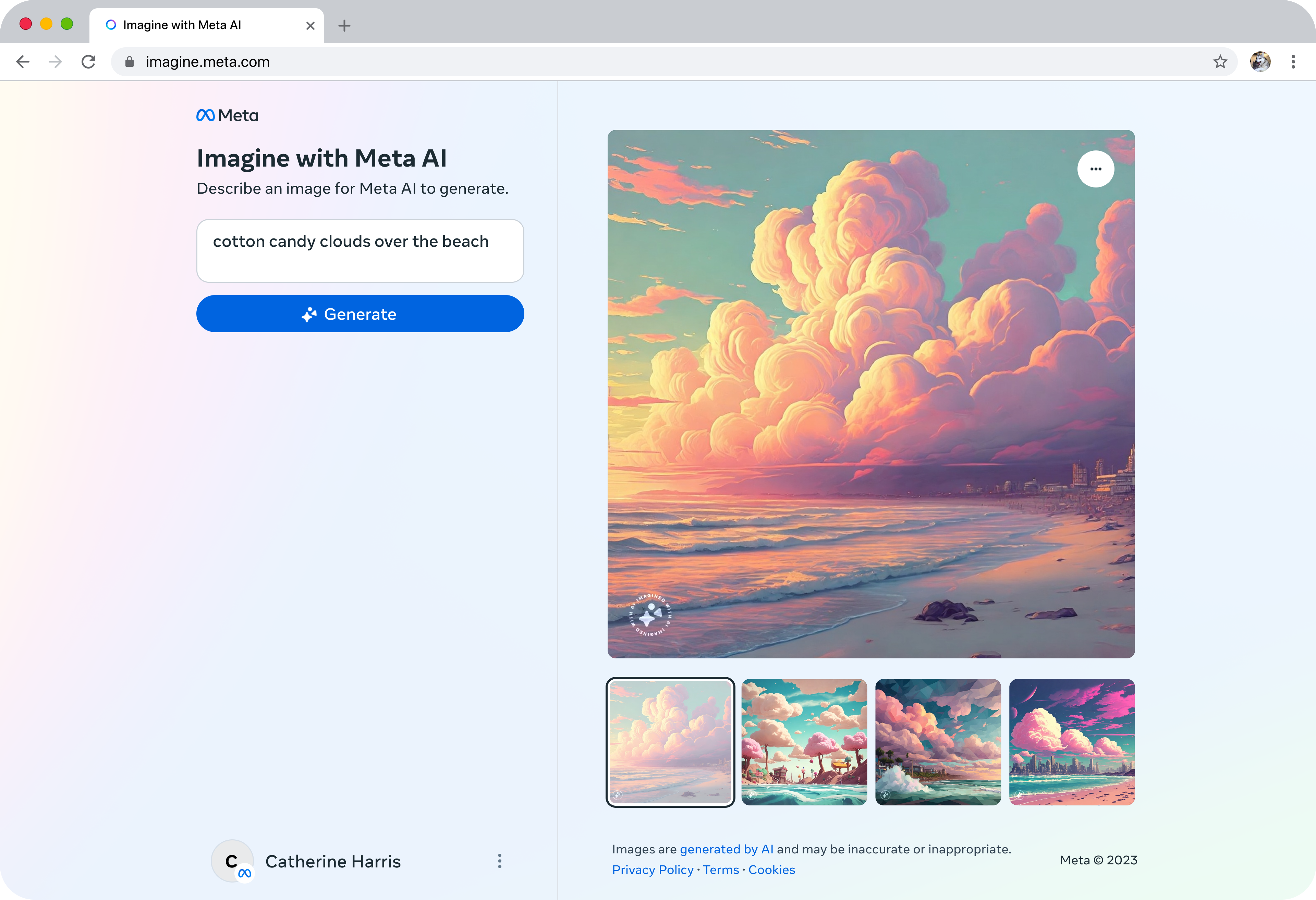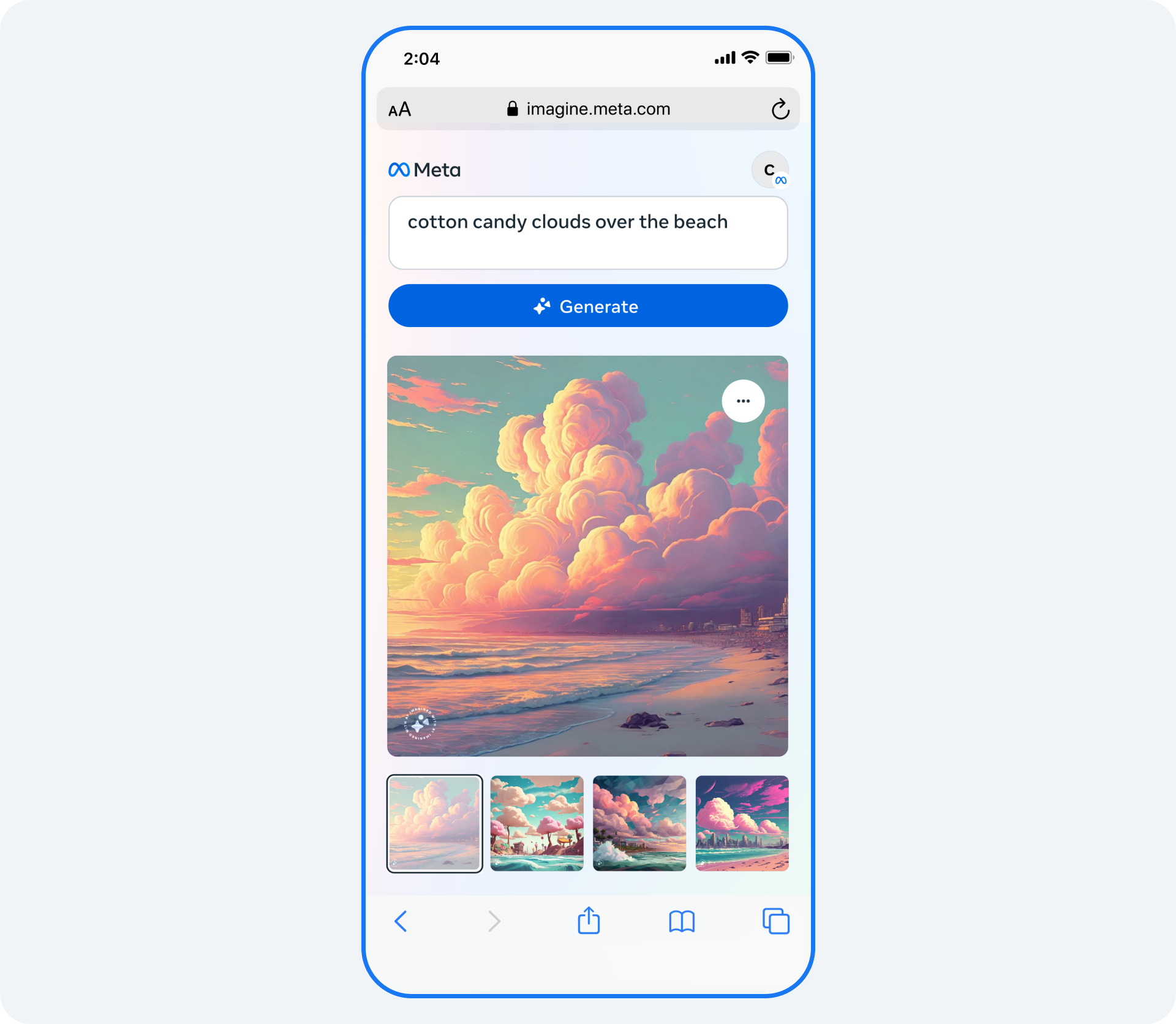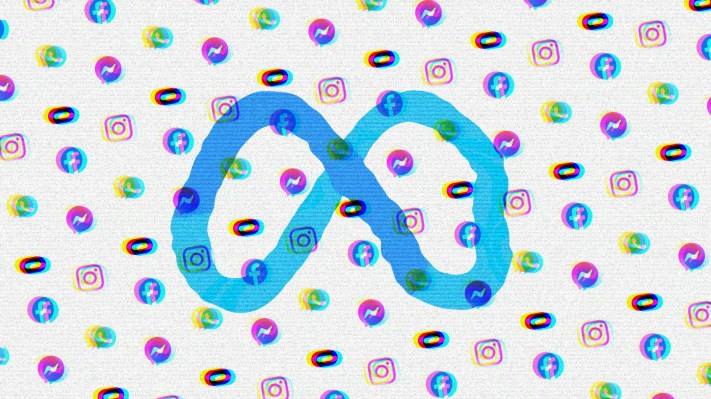Not to be outdone by Google’s Gemini launch, Meta’s rolling out a new, standalone generative AI experience on the web, Imagine with Meta, that allows users to create images by describing them in natural language.
Similar to OpenAI’s DALL-E, Midjourney and Stable Diffusion, Imagine with Meta, which is powered by Meta’s existing Emu image generation model, creates high-resolution images from text prompts. It’s free to use (at least for now) for users in the U.S. and generates four images per prompt.
“We’ve enjoyed hearing from people about how they’re using imagine, Meta AI’s text-to-image generation feature, to make fun and creative content in chats. Today, we’re expanding access to imagine outside of chats,” Meta writes in a blog post published this morning. “While our messaging experience is designed for more playful, back-and-forth interactions, you can now create free images on the web, too.”

Image Credits: Imagine with Meta
Now, Meta’s image generation tools have landed the company in hot water in the recent past (see: Meta’s racially biased AI sticker generator), which makes this writer wonder whether there’s safeguards in Imagine with Meta to prevent history from repeating itself. We weren’t given the chance to test the tool prior to its launch, but rest assured we’ll be keeping a close eye as Imagine with Meta reaches more users.
They won’t be live at the start, but Meta pledged to begin adding watermarks to content generated by Imagine with Meta in the coming weeks for “increased transparency and traceability.” (There’s already a visible watermark.) The watermarks, which are invisible, will be generated with an AI model and detectable with a corresponding model, Meta says. No word on whether the detection model will be made public at some point.

Image Credits: Meta
“[The watermarks are] resilient to common image manipulations like cropping, resizing, color change (brightness, contrast, etc.), screen shots, image compression, noise, sticker overlays and more,” Meta stated in the post. “We aim to bring invisible watermarking to many of our products with AI-generated images in the future.”
Watermarking techniques for generative art aren’t new. French startup Imatag offers a watermarking tool that it claims isn’t affected by resizing, cropping, editing or compressing images. Another firm, Steg.AI, employs an AI model to apply watermarks that survive resizing and other edits. Microsoft and Google have adopted AI-based watermarking standards and technologies, while elsewhere, Shutterstock and Midjourney have agreed to guidelines to embed markers indicating their content was created by a generative AI tool.
But the pressure is ramping up on tech firms to make it clearer that works were generated by AI — particularly in light of the flood of Deepfakes from the Gaza war and filter-bypassing AI-generated child abuse images.
Recently, China’s Cyberspace Administration issued regulations requiring that generative AI vendors mark generated content — including text and image generators — without affecting user usage. And in recent U.S. Senate committee hearings, Senator Kyrsten Sinema (I-AZ) emphasized the need for transparency in generative AI, including by using watermarks.
